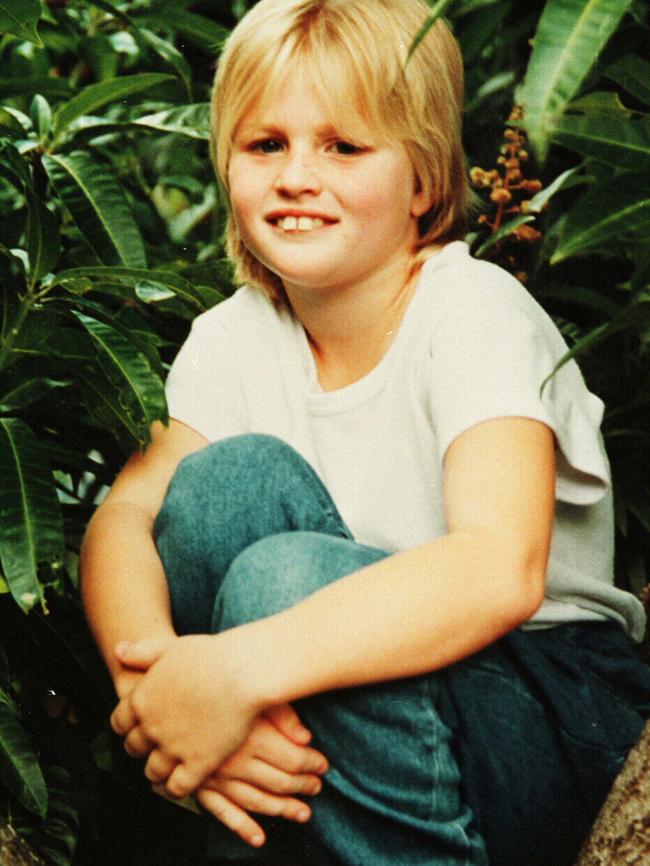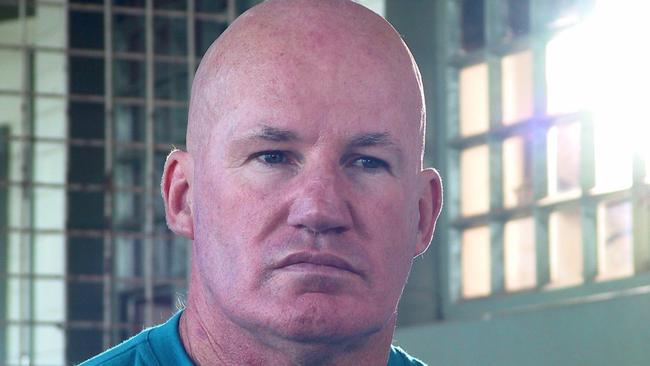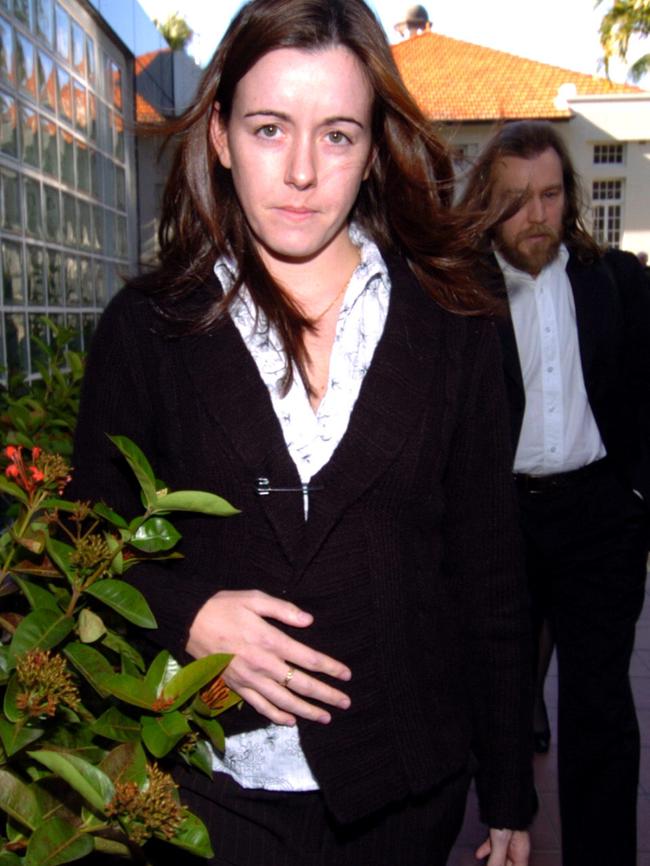“I WANT you to air this to the world by the tabloids and the electronic media,’’ the letter began. “I want you to understand that I am responsible for all of the murders in the Rockhampton area. “You will never know my real name but you can refer to me as Squeaky. Now I will give information on the murders that only the real culprit would know. This information would never have been published by media sources.”
IT had been nearly two years since a little girl’s death had exposed one of Australia’s worst serial killers.
By 1999, Leonard John Fraser was only four days between murders. The day before he snatched golden-haired Keyra Steinhardt as she walked home from school, Fraser had been busy moving and burying the body of his last victim.

But in 2001, with a handful of murder charges hanging over his head, Fraser was busy plotting his freedom.
In an imbecile attempt to clear his name, Fraser decided to blame someone else.
A man named “Squeaky’’, he’d already told detectives, had murdered all those women.
Fraser had only helped get rid of the bodies.
He’d been speaking of his plan to fellow inmate Alan Quinn. On January 12, Quinn took pen and paper and listened as Fraser told him what to write.
Quinn was to hand the letter to one of his visitors and the visitor would distribute it to media outlets.
Journalists would be immediately duped into believing of the existence of the non-existent Squeaky — thanks to the information ``only the real culprit would know’’ – and Fraser would be cleared.

But Quinn was in the pocket of police. When he’d finished writing Fraser’s letter, he handed it straight to detectives. He’d been telling investigators about all of his conversations with the serial killer. Some of them he’d even taped.
By the time he’d began following Keyra Steinhardt home from school, Fraser was a violent serial rapist who had spent much of his life in prison.
He was sent to a boys’ home at the age of 15 for stealing. It was there he learnt to take what he wanted — including sex.
In the early 70s he was in Kings Cross, living off the earnings of prostitutes.
In 1974 he committed a series of sex attacks on women. He was caught after dropping his wallet during one of the assaults.
Detectives grilling the rapist would get a bonus confession. Fraser admitted to attacking a French tourist two years earlier — an attack so brutal the woman was left unable to have children.
He was sentenced to 21 years in prison by a judge who would described him as a ``classic psychopath’’. He served only seven.
He would get another 12 years for the 1985 rape of a woman he’d been stalking for days as she walked along a beach north of Mackay. This time authorities made sure he served every day.
In 1997, Fraser was free to rape again. And so he did.
He’d moved to Yeppoon and taken up with a woman with terminal cancer. He raped her at the hospital where she was receiving treatment. She died soon after.
His next stop was Mt Morgan.
He hadn’t been in town long when a muscly, tattooed Fraser waved down a passing police car.
``What are the women like in this place?’’ he asked an officer, poking his head through the open car window. Back at the station, the officers ran the name Leonard John Fraser — and couldn’t believe their eyes.
Locals eventually ran him out of town after spotting him dragging a woman down the street after spiking her drink.
Later, police would discover he’d raped scores of women at knifepoint, telling them his bikie gang friends would come for them if they dared tell police.
By late 1998, Fraser had moved on to Rockhampton — and into a house with an intellectually disabled woman.
In December he ran into 39-year-old Julie Turner outside a local nightclub.
He would later claim she was strangled with her own bra before her body was dumped in bushland east of Rockhampton.
Fraser killed again in March the following year. Beverley Leggo was 36 years old when she disappeared.
She’d dropped into a bank to speak to the manager. He wasn’t available, so she promised to return in an hour. She never made it.
Fraser had bashed her, stripped her clothes and strangled her with her underwear. A bra and black panties would be found tied around her throat.
On April 10, 1999, he took a friend and her daughter to Nankin Creek to go swimming.
Fraser wandered off into the bush by himself for a time. Not 20m from where they’d been swimming was the body of Ms Leggo where the killer had hidden it the previous month.
Eight days later he killed again.
This time his victim was Sylvia Benedetti. The 19-year-old was lured into an empty room in the derelict Queenslander Hotel in Rockhampton.
There, the serial killer bashed her with a blunt instrument. She would die from head injuries, her blood spraying the walls.
Three days later, Fraser heard some disturbing news. The Queenslander Hotel would soon be demolished.
``They can’t do that!’’ he told the friend in surprise.
Police believe Fraser returned to the hotel that day to move Ms Benedetti’s body. Her blood would later be found in the boot of his car.
Keyra Steinhardt was murdered the very next day.
She was walking home from school, cutting through a vacant lot when the killer struck.
He hit her hard enough across the back of the head to fracture her skull.
He returned later with his car, stuffing the little girl into the boot.
But Fraser’s luck was over. A prison warden who knew Fraser well had seen him in the area that day. When news of Keyra’s abduction hit the media, he called police.
Police would add another murder to Fraser’s tally — 14-year-old Natasha Ryan.

The schoolgirl had been missing since 1998, having been last seen at a movie theatre.
Five years after she disappeared — and as Fraser fronted court charged with five murders — Natasha made headlines around the world when she was suddenly discovered living in her boyfriend’s closet.
In the days after Keyra Steinhardt’s murder, flowers began appearing along the fence of the vacant lot where her killer struck.
Her mother Treasa noticed them. Just a few at first. But as the days went by, more and more appeared.
Soon the fence was covered in flowers, pictures, cards, teddy bears and messages of sorrow.
When it began to rain, State Emergency Services volunteers hung tarps to keep them dry.
Many mourned for the little girl. Her mother believed she died for a reason — to catch a killer. To save the other women he might have slain.
Leonard John Fraser was 55 when he died from a heart attack in prison. Few would have mourned a man who hurt so many.
And when he died, he took his secrets with him.
How many more had he killed? When police searched his Rockhampton home, they found the trophies he’d saved from the women he’d attacked.
Among them, three ponytails, hacked off at the base, their hair bands still attached.
Police can only be sure of one thing — the ponytails do not belong to any of Fraser’s known victims.
###


Add your comment to this story
To join the conversation, please log in. Don't have an account? Register
Join the conversation, you are commenting as Logout
Thousands of Aussies want inquest into Louisa Ioannidis’ death
Calls for an inquest into the death of 24-year-old Louisa Ioannidis, who was found dead in a Melbourne creek, have grown after new evidence was discovered.
‘Silenced and sidelined’: Broken justice system fails victims of crime
Victims of violent crimes and sexual assault say going through Victoria’s “injustice” system was worse than the crime itself, with some questioning whether they would ever report another crime.